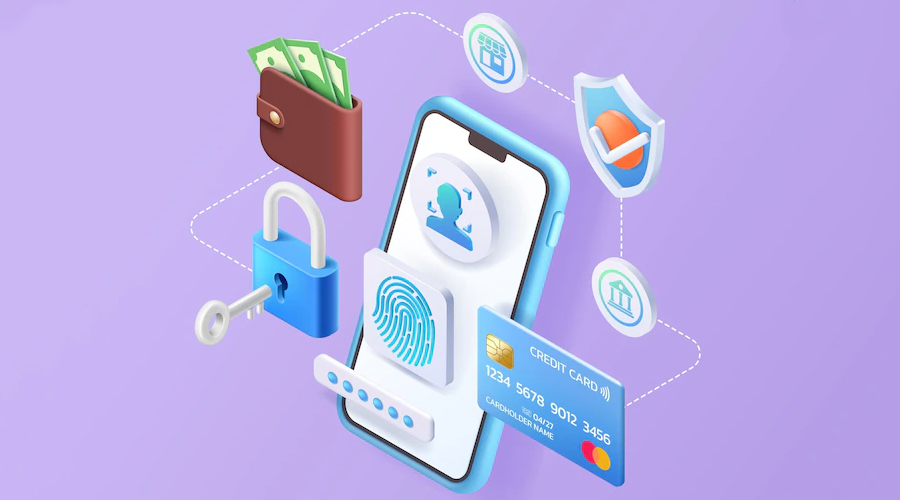Table of Contents
Platform Selection
Selecting the right platform for e-commerce app development is a pivotal decision that significantly influences the app’s functionality, scalability, and overall success. The choice of platform plays a critical role in determining the app’s performance, user experience, and the ease of maintenance and updates. In the realm of e-commerce, several platforms stand out, each with its unique features and suitability for different business requirements.
Platform Considerations:
- Shopify: Renowned for its user-friendly interface and simplicity, Shopify is an excellent choice for startups and small to medium-sized businesses. It offers a range of customizable templates, extensive app integrations, and a seamless checkout process. However, it may have limitations in terms of customization for more complex requirements.
- Magento: Known for its robustness and scalability, Magento is ideal for larger enterprises or businesses with complex needs. It provides extensive customization options, flexibility, and a robust set of features. However, its complexity might demand more significant technical expertise for setup and maintenance.
- WooCommerce: A WordPress plugin, WooCommerce, combines the versatility of WordPress with e-commerce functionality. It’s suitable for businesses already using WordPress, offering a familiar interface, scalability, and a wide range of plugins. However, it might require additional plugins for advanced features.
- BigCommerce: Offering a balance between ease of use and scalability, BigCommerce provides a feature-rich platform suitable for businesses aiming for growth. It offers built-in marketing tools, scalability, and a range of customizable templates, making it suitable for mid-sized businesses.
Factors Influencing Platform Selection:
- Scalability: Consider the projected growth of your business. Choose a platform that can scale alongside your business needs without compromising performance or user experience.
- Customization: Evaluate the level of customization required for your app. Some platforms offer more flexibility in customization than others. Decide based on the specific features and design elements crucial for your app’s success.
- Integration Capabilities: Assess the ease of integrating third-party tools, payment gateways, and other essential services. A platform that seamlessly integrates with necessary tools can streamline operations.
- Security: E-commerce deals with sensitive customer information. Opt for a platform that prioritizes security measures, including SSL certificates, regular updates, and robust data encryption.
- Cost Considerations: Factor in not just the initial setup cost but also ongoing expenses, including hosting, maintenance, and potential scalability costs. Choose a platform that aligns with your budget and long-term financial plans.
User Interface Design
Crafting an exceptional user interface (UI) design within an e-commerce app is an art and science that goes far beyond aesthetics. It’s about creating an intuitive, visually appealing, and functional environment that seamlessly guides users through their journey, ultimately driving engagement, conversion, and satisfaction. Here’s an in-depth exploration of UI design in the realm of e-commerce apps, spanning various crucial elements and strategies.
The Essence of UI Design in E-commerce Apps
1. User-Centric Approach:
UI design begins with understanding users. Conducting user research, analyzing their behavior, preferences, and pain points is foundational. This insight shapes the design decisions, ensuring the interface resonates with the target audience.
2. Visual Design and Aesthetics:
Visual elements play a pivotal role. Consistent branding, captivating imagery, intuitive layouts, and attention to typography contribute to a visually appealing interface. Using colors strategically to evoke emotions and guide user attention is crucial.
3. Navigation and Information Architecture:
Simplified navigation is key in e-commerce UI design. Well-structured information architecture ensures that users can effortlessly find what they’re looking for. Clear categorization, filters, and search functionalities enhance the user experience.
4. Responsive Design:
In an era dominated by various devices, responsive design is non-negotiable. Ensuring the app functions seamlessly across different screen sizes and orientations is vital for user retention and satisfaction.
5. Microinteractions and Feedback:
Microinteractions, such as subtle animations or feedback upon completing an action, add depth to the user experience. Providing immediate feedback for user actions helps in creating a more engaging interface.
6. Personalization and Customization:
Tailoring the user experience based on individual preferences amplifies user engagement. Implementing features like personalized recommendations or saved preferences enhances the overall experience and encourages repeat visits.
7. Accessibility and Inclusivity:
An inclusive UI design ensures accessibility for all users, regardless of disabilities. Features like alt text for images, proper color contrast, and scalable fonts are crucial for a universally accessible interface.
8. Loading Speed and Performance:
The speed at which an app loads and performs directly impacts user satisfaction. Optimizing images, minimizing code, and employing caching techniques are imperative for a smooth user experience.
9. Security and Trust Elements:
Integrating trust elements, such as secure payment icons, SSL certificates, and clear privacy policies, fosters trust and confidence among users, crucial in e-commerce transactions.
10. A/B Testing and Iterative Design:
Continuous improvement is key. A/B testing various design elements and functionalities helps in understanding user preferences and iteratively refining the UI for better performance.
Strategies for Effective UI Design in E-commerce Apps
1. Simplicity and Clarity:
Striking a balance between simplicity and providing comprehensive information is crucial. Clutter-free interfaces with clear CTAs (Call to Actions) guide users seamlessly.
2. Mobile-First Approach:
Given the surge in mobile users, adopting a mobile-first design approach ensures the app is optimized for smaller screens, enhancing the overall user experience.
3. Consistency Across Platforms:
Maintaining consistency in design elements, such as buttons, icons, and color schemes, across different platforms fosters familiarity and ease of use.
4. User Feedback and Iteration:
Actively seeking user feedback and incorporating it into the design process is invaluable. Iterating based on user insights ensures the app stays relevant and user-friendly.
5. Storytelling through Design:
Design elements can narrate a story about the brand and its products. Engaging visuals and interactive elements can create an emotional connection with users, leading to higher engagement.
6. Performance Optimization:
Prioritizing performance optimization, such as reducing load times and ensuring smooth transitions, significantly impacts user satisfaction and retention.
7. Human-Centered Design Principles:
Embracing human-centered design principles like empathy, usability, and inclusivity ensures the design resonates with users on a deeper level.
Payment Gateway Integration
In the expansive world of e-commerce, facilitating secure and seamless transactions is pivotal to the success of any online business. Payment gateway integration plays a central role in enabling these transactions, ensuring a smooth and trustworthy experience for both merchants and customers. This comprehensive guide dives deep into the intricacies of payment gateway integration within e-commerce applications, spanning the technical aspects, popular gateway options, security considerations, and best practices for a successful implementation.
Understanding Payment Gateways
Payment gateways serve as intermediaries between merchants and financial institutions, authorizing and facilitating online transactions. These gateways encrypt sensitive information (such as credit card details) to ensure secure transmission between the customer, merchant, and the payment processor.
The Integration Process
- Research and Selection: Choosing the right payment gateway involves evaluating factors like transaction fees, supported payment methods, geographical coverage, and compatibility with the e-commerce platform. Popular options include PayPal, Stripe, Authorize.Net, and Braintree.
- Merchant Account Setup: Merchants need to establish accounts with their chosen payment gateway provider or acquire a merchant account with a bank to receive payments. This involves a verification process and compliance with the gateway’s terms and conditions.
- API Integration: Application Programming Interfaces (APIs) serve as the bridge between the e-commerce platform and the payment gateway. Developers integrate these APIs into the app’s codebase, allowing it to communicate and process transactions securely.
- Testing and Sandbox Environment: Before going live, rigorous testing in a sandbox environment is crucial. This phase involves simulated transactions to ensure seamless functionality and to identify and address any potential issues.
- Compliance and Security: Payment Card Industry Data Security Standard (PCI DSS) compliance is mandatory to safeguard sensitive customer information. Adhering to these standards involves encryption, regular security audits, and maintaining strict data protection protocols.
Popular Payment Gateway Options
- PayPal: Renowned for its global reach and ease of use, PayPal offers various integration options, catering to businesses of all sizes. Its Express Checkout, PayPal Payments Pro, and REST APIs are popular choices.
- Stripe: Recognized for its developer-friendly APIs and comprehensive documentation, Stripe supports a wide range of payment methods and currencies, making it a favorite among startups and enterprises alike.
- Authorize.Net: With its diverse features and robust fraud prevention tools, Authorize.Net is a trusted choice for merchants seeking reliability and security. Its APIs enable seamless integration across different platforms.
- Braintree: Acquired by PayPal, Braintree specializes in mobile and web payment solutions. Its developer-centric approach and support for various payment methods make it an attractive option for businesses targeting mobile commerce.
Security Considerations
Security remains paramount in payment gateway integration to safeguard sensitive customer data and prevent fraudulent activities. Employing encryption techniques, adhering to PCI DSS standards, implementing two-factor authentication, and regularly updating security measures are essential practices.
Best Practices for Successful Integration
- User Experience Focus: Prioritize a seamless checkout experience to minimize friction and abandoned carts. Opt for an intuitive interface, minimal form fields, and multiple payment options to cater to diverse customer preferences.
- Mobile Optimization: Given the surge in mobile commerce, ensure the payment gateway integration is optimized for various mobile devices and platforms, providing a consistent experience across all screens.
- Transparent Pricing: Clearly communicate transaction fees, currency conversion charges, and any additional costs associated with different payment methods to avoid customer dissatisfaction or confusion.
- Regular Updates and Maintenance: Stay abreast of updates from the payment gateway provider and implement them promptly. Regularly monitor the gateway’s performance and address any issues promptly to ensure uninterrupted service.
Order Tracking and Management
In the dynamic realm of e-commerce, the journey from a customer placing an order to its successful delivery encompasses a crucial phase: order tracking and management. This pivotal process not only ensures transparency and convenience for customers but also plays a significant role in optimizing operations for businesses. In this comprehensive guide, we delve deep into the intricate world of order tracking and management in e-commerce, exploring its nuances, challenges, best practices, and technological advancements.
Understanding Order Tracking and Management
What is Order Tracking?
Order tracking refers to the mechanism through which customers can monitor the status and whereabouts of their purchases from the moment they place an order until it’s delivered to their doorstep. It provides real-time updates on the order’s journey, including processing, packaging, shipping, and delivery.
Importance of Effective Order Management
Efficient order management is the backbone of successful e-commerce operations. It involves overseeing the entire order lifecycle, from order placement to fulfillment, inventory management, and post-delivery support. A streamlined process enhances customer satisfaction, reduces errors, and improves operational efficiency.
Components of Effective Order Tracking and Management
1. Robust Tracking Systems
Implementing a robust tracking system is fundamental. Utilizing advanced technologies like GPS tracking, RFID, or barcoding enables accurate monitoring of shipments throughout the logistics chain. Integration with shipping carriers or third-party logistics providers is also crucial for seamless tracking.
2. Real-time Updates for Customers
Providing customers with real-time updates via multiple communication channels (email, SMS, app notifications) about their order status fosters transparency and customer satisfaction. Offering an estimated delivery window and allowing customers to track their packages enhances the overall experience.
3. Inventory Management Integration
Efficient order tracking relies on seamless integration with inventory management systems. Real-time synchronization of inventory levels with order processing prevents overselling, stockouts, and delays in fulfillment.
4. Streamlined Order Processing
Automating order processing workflows reduces manual errors and accelerates order fulfillment. Utilizing order management software that can handle multiple sales channels, payment gateways, and shipping options streamlines the process.
5. Exception Handling and Customer Support
Proactive handling of exceptions like delays, lost shipments, or damaged goods is crucial. Offering responsive customer support channels and clear policies for order-related issues ensures customer satisfaction and loyalty.
Challenges in Order Tracking and Management
Logistics Complexity
Navigating complex logistics networks involving multiple carriers and warehouses poses challenges in maintaining uniform tracking standards and ensuring timely deliveries.
Data Accuracy and Integration
Maintaining accurate and updated data across various systems (inventory, order processing, tracking) requires seamless integration and synchronization, which can be a challenge.
Customer Expectations and Communication
Meeting diverse customer expectations regarding delivery speed, transparency, and communication can be demanding, requiring consistent and clear communication channels.
Technological Advancements Transforming Order Tracking and Management
AI and Machine Learning
AI-powered predictive analytics optimize inventory levels, forecast demand, and enhance route optimization for efficient deliveries.
Blockchain Technology
Blockchain ensures transparency and security in tracking by providing immutable records of transactions and shipment movements.
Internet of Things (IoT)
IoT devices facilitate real-time tracking through embedded sensors in shipments, enabling precise monitoring of location, temperature, and other vital parameters.
Best Practices for Enhanced Order Tracking and Management
- Regularly update customers on their order status through preferred communication channels.
- Invest in robust tracking technologies and integrate them with inventory and order management systems.
- Offer multiple delivery options and transparent return policies to cater to diverse customer needs.
- Continuously analyze data to optimize routes, inventory levels, and order processing workflows.
- Provide exceptional customer support and proactively address order-related issues.
Mobile Responsiveness
In today’s digital era, the exponential growth of mobile usage has revolutionized the way people interact with the internet. As mobile devices increasingly become the primary means of online access for a large demographic, the significance of mobile responsiveness in e-commerce app development cannot be overstated.
Understanding Mobile Responsiveness
Mobile responsiveness refers to the adaptability of a website or application to various screen sizes and devices. In the context of e-commerce, it implies ensuring that the app functions seamlessly across a spectrum of devices, including smartphones and tablets, without compromising the user experience.
The Mobile Revolution and E-commerce
The proliferation of smartphones has reshaped consumer behavior, influencing how individuals discover, research, and purchase products online. According to statistics, a substantial portion of online retail sales is now conducted via mobile devices. This shift necessitates that e-commerce platforms prioritize mobile responsiveness to cater to the evolving preferences and habits of consumers.
Impact on User Experience
A mobile-responsive e-commerce app translates to an enhanced user experience. It’s not merely about fitting content onto smaller screens; it’s about optimizing the interface, navigation, and functionality for effortless use on mobile devices. Intuitive design, easy navigation, and swift load times contribute significantly to user satisfaction and engagement.
SEO and Mobile Responsiveness
Search engines prioritize mobile-friendly websites and applications in their rankings. A mobile-responsive e-commerce app is more likely to attain higher visibility in search engine results, amplifying its reach and attracting more potential customers. Google, for instance, uses mobile-first indexing, making mobile-friendly sites a crucial factor in search rankings.
Conversion Rates and Revenue
Mobile responsiveness directly impacts conversion rates. A user-friendly experience on mobile devices encourages visitors to explore the app, browse products, and complete purchases, thereby boosting conversion rates. A seamless mobile experience contributes substantially to revenue generation for e-commerce businesses.
Technical Considerations
Developing a mobile-responsive e-commerce app involves various technical considerations. Implementing responsive web design, optimizing images and content for smaller screens, and employing flexible grids and layouts are essential components of ensuring mobile responsiveness. Moreover, employing progressive web app (PWA) technology can enhance both responsiveness and user experience.
Challenges and Solutions
Developing a mobile-responsive e-commerce app isn’t without its challenges. Addressing issues related to varying screen sizes, device capabilities, and platform fragmentation requires a meticulous approach. However, employing frameworks like Bootstrap or utilizing CSS media queries to create adaptive layouts can mitigate these challenges effectively.
User Engagement and Retention
A mobile-responsive e-commerce app contributes significantly to user engagement and retention. A seamless experience across devices encourages users to return and engage with the platform regularly. Additionally, features like push notifications, personalized content, and easy access to account information on mobile devices foster a loyal user base.
Best Practices for Mobile Responsiveness
Several best practices can ensure optimal mobile responsiveness in e-commerce app development. Prioritizing a mobile-first approach during design, conducting thorough testing across devices, optimizing site speed, and employing responsive design principles are key practices to uphold.
Future Trends and Innovations
The future of mobile responsiveness in e-commerce is poised for innovation. Advancements in technology, such as augmented reality (AR) for immersive shopping experiences, voice commerce integration, and AI-driven personalization, will further revolutionize how e-commerce apps cater to mobile users.
Customer Support Features
In the bustling world of e-commerce, where competition thrives and user expectations continuously evolve, the role of customer support features within applications has transcended mere assistance. It has become a pivotal factor in determining the success, reputation, and customer loyalty for any online business. Comprehensive customer support features are not just about addressing issues; they’re about creating an immersive, supportive environment that fosters trust and enhances user satisfaction.
The Significance of Customer Support Features in E-commerce Apps
- Building Trust and Credibility: Prompt and effective customer support builds trust. When users know they have reliable assistance, they’re more likely to engage, make purchases, and recommend the platform to others.
- Resolving Queries and Concerns: Quick resolutions to customer queries or issues lead to increased satisfaction. A well-equipped support system can efficiently address concerns, reducing customer frustration and enhancing their experience.
- Reducing Cart Abandonment: A robust support system helps in addressing doubts or complications during the purchase process, thus reducing instances of cart abandonment.
- Enhancing Brand Loyalty: Positive interactions through support channels can turn first-time buyers into loyal customers. A satisfied customer is more likely to return and advocate for the brand.
Types of Customer Support Features in E-commerce Apps
1. Live Chat Support:
- Real-time Assistance: Enables instant communication between users and support representatives.
- 24/7 Availability: Ensures round-the-clock assistance for users, addressing their queries promptly.
2. Help Desk Ticketing System:
- Structured Query Handling: Allows users to submit tickets regarding their issues, categorizing and organizing them for efficient resolution.
- Tracking and Follow-Ups: Enables both users and support teams to track the progress of each query until resolution.
3. AI-Powered Chatbots:
- Automated Assistance: Offers instant responses to frequently asked questions and simple queries.
- Scalability: Handles a large volume of inquiries simultaneously without human intervention.
4. Knowledge Base and FAQs:
- Self-Service Options: Provides users with a repository of information to troubleshoot common problems without contacting support.
- Easy Accessibility: Ensures users can easily find relevant information to resolve their queries independently.
5. Social Media Integration:
- Omni-channel Support: Allows users to reach out for support via various social media platforms, facilitating easy communication.
Implementing Effective Customer Support Features
- User-Friendly Interface: Ensure the support features are seamlessly integrated into the app’s interface for easy access.
- Personalization: Utilize user data to provide personalized support, offering solutions based on their preferences and past interactions.
- Continuous Improvement: Regularly analyze user feedback to identify areas of improvement in the support system and make necessary enhancements.
- Training and Empowering Support Staff: Equip your support team with the necessary tools and training to handle diverse queries efficiently.






















